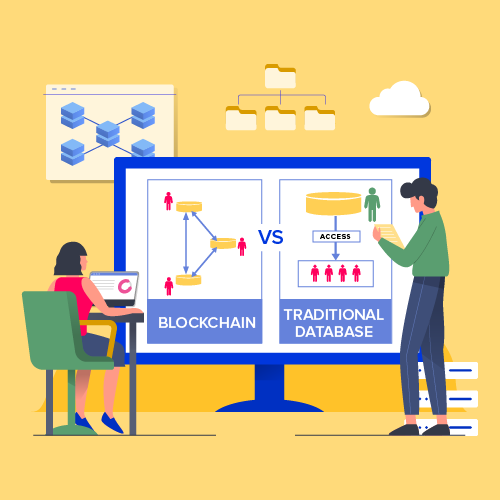Blockchain vs. Traditional Database: What Should Be a Startup’s Choice
Blockchain Technology has witnessed phenomenal growth in the last few years and appears to stay on track in gaining enterprise adoption. But while it has covered an appreciable curve of general acceptance, it continues to baffle people conceptually.
Striking similarities between Blockchain and databases makes people wonder “is Blockchain just a database?” Yes, Blockchain technology is a database that comes with several distinguishable traits. These traits are what lead to the debate of Blockchains versus traditional databases.
Therefore, in this post, we would systematically approach the definitions, similarities, and differences between the two to enable a better understanding of the subject for entrepreneurs and startups looking to explore blockchain.
What is a Traditional Database?
Data structures are defined as a storage format for efficient management of data. A traditional database is nothing but a data structure, that helps in storing and working with data. Each organization, from a startup to a Government entity, uses databases depending upon the scale and size of their operations. The aspect that makes databases utilitarian, is they allow users to fetch the data. In technical terms, this is referred to as requesting or querying data that is achieved by Structured Query Language, SQL.
The first-ever architecture of databases was based on a hierarchical style that made it possible to collect and store data. But that was just about it. As technology trends caught on with time, dragging the tide of businesses with it, data became complex. Likewise, analysts wanted databases to interoperate so they could draw better business conclusions. Thus, the database design shifted to a relational model. Today, all you need for an end-to-end data optimizing process is a Database Management System (DBMS).
Databases are no rocket science, in that they are simple tables. Tables are fields (columns) that contain the details regarding the nature of data. Rows are called records.
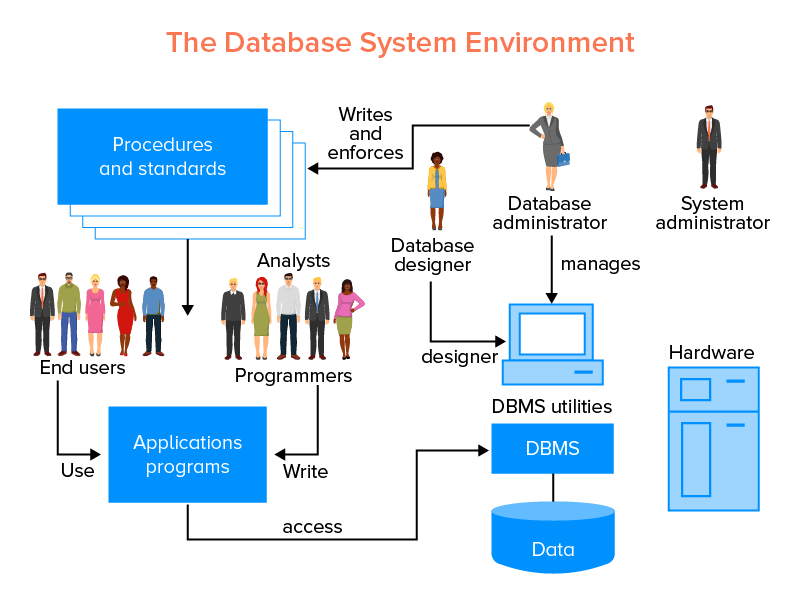
What is Blockchain?
Blockchain is a decentral database that acts as a storage for chunks of bundled information called blocks. The reason the blocks are referred to as chains is that each block carries the hashed data of the block added to the ledger before it. This goes back to Genesis, the first-ever block that was mined for bitcoin. A hash is a code that encrypts the transactions in a given block. This code is, essentially, a pointer, a name of sorts, that uniquely identifies a block.
The bitcoin protocol makes it mandatory for every new block to contain the hash of the previous block plus the hash of the block that contains information for newly processed transactions.
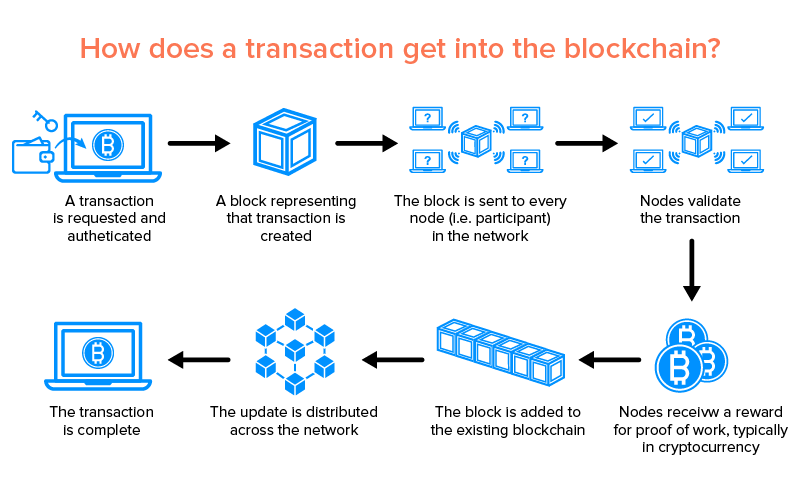
But as any blockchain service provider would tell you, finding this new hash isn’t easy. Blockchain technology underpinning bitcoin adjusts hashing difficulty by calculating the total computing power of the network. The more miners there are, the harder it is to find a hash and vice versa. In return for validating blocks and helping run the Blockchain, miners are rewarded with bitcoin.
Now that we have understood what blockchain and traditional databases are, let’s compare both the technologies using important pointers.
Blockchain & Traditional Database Architectures
Defining the Traditional Database Architecture
Traditional databases are based on client-server architecture. Clients are end-users of the service that request access to a particular set of data. This request goes through a server that hosts the database. Open database connectivity is used to establish a communication line between clients and the database.
This line is further secured by the client software that is authenticated up ahead for access. In private databases, access is granted to only those who have valid login credentials and a password. An example could be confidential health records of a hospital. If a database is public and open for all, then a user account is not needed and the data can be accessed from a website. This, in turn, has played a huge role in Blockchain transforming the closed healthcare system.
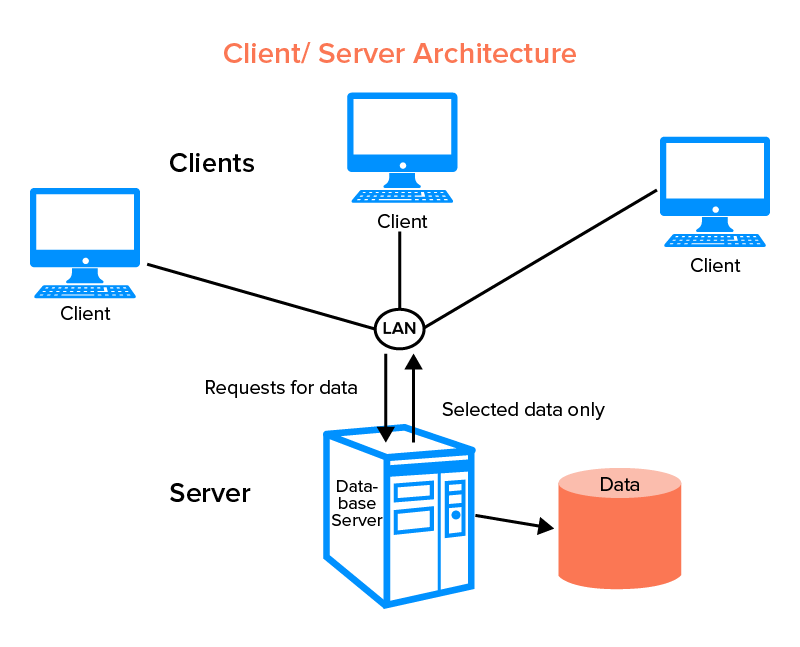
Defining the Blockchain Architecture
Blockchain Technology has come of age and offers multiple architectural models such as permissioned, private, or hybrid blockchain.
Network nodes are the lifeline of Blockchain technology and they operate on a Peer-to-Peer, P2P, model. Each peer/node can correspond with a second node. There is no superiority or bias between 2 nodes in terms of responsibilities but yes, there could be a difference in total computing resources they possess. Peers of a network ensure the veracity of the Blockchain.
For the transactions to be manipulated either a 51% attack would need to happen (as mentioned above) or multiple peers would have to collude and accept blocks with falsified data. By architecture, Blockchain database technology protocols accept the longest-running, active chain. Therefore, its decentralized administration makes it safe and secure to be trusted and earns it extra points in the matchup of Blockchain vs distributed database.
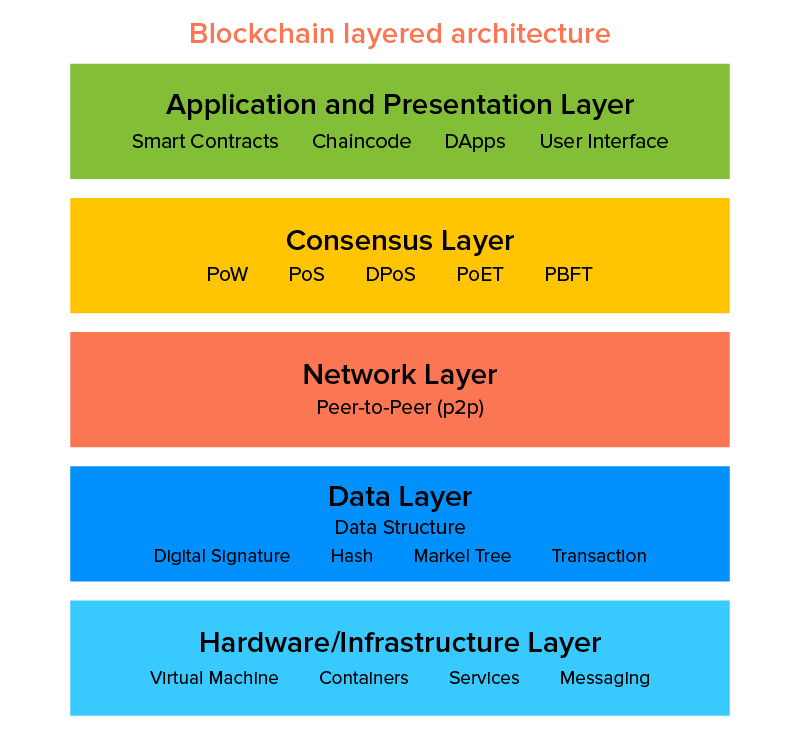
Management of Traditional & Blockchain Database
Managing Traditional Database
Databases support CRUD operations i.e. you can create, read, update, and delete records. Database management is centralized and under the control of an administrator. This individual has the power to modify the database, potentially at will. Their key responsibility is to up the performance and lower database redundancy. As the database expands, so do the daily audits and the corresponding checklist of maintenance tasks.
To aid in this process, a primary administrator can divide his/her tasks and distribute work between multiple users, each assigned a minor task. This could be anything from data entry to modification.
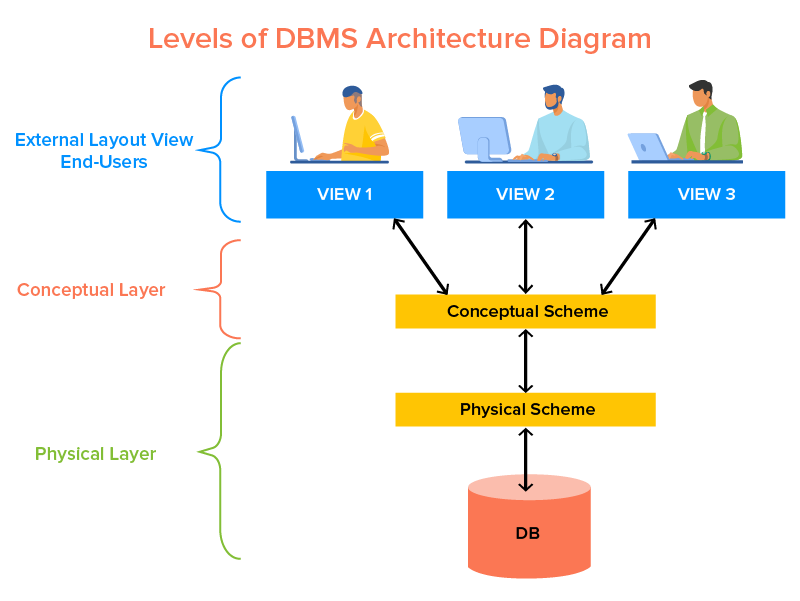
Databases require backup storage as anything could go wrong. Data can be corrupt, servers could crash, and critical information could be lost. In such cases, the files are retrieved from backups. Backing up also allows archiving multiple versions of a database. As an example, consider an address change. Whereas you might contact relevant Government bodies to update “records” and issue you an ID reflecting the same, they will still save a copy of the last address, for record-keeping.
Managing Blockchain
Blockchain technology decouples administration and divides it amongst all the nodes of the network that ensure it runs with their computing power. Each of the nodes stores a copy of the complete Blockchain. In wanting to change the contents of a block, its hash would have to be changed. Since Blockchain technology automatically revises the difficulty level for hashing a block, a tremendous amount of computing power would be required to change the hash of all the blocks. The only situation where that would be possible is a 51% attack, wherein the rogue actor has more computing power than the majority of the network.
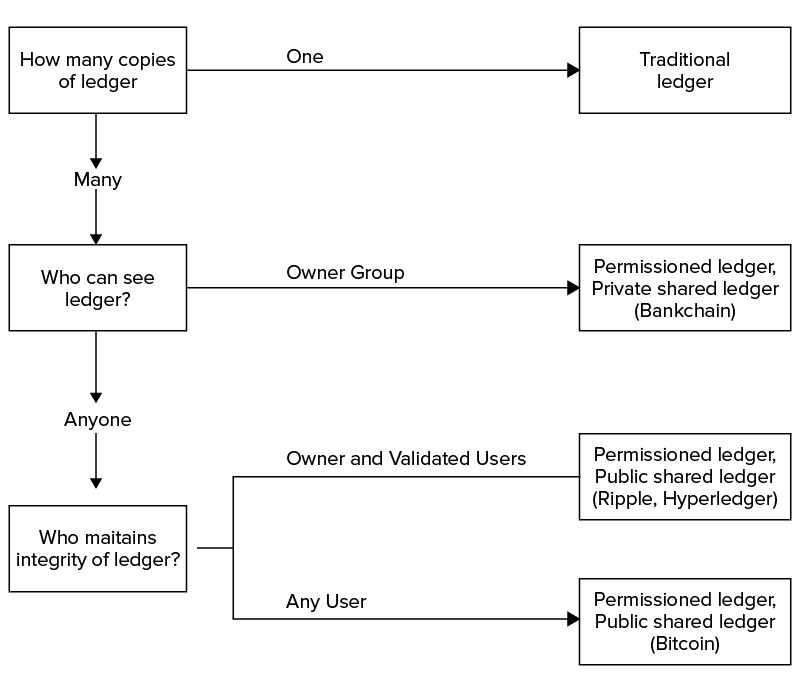
As a result, Blockchain technology is proven to be immutable. Since records can’t be changed, this adds transparency to the architecture. They are also remarkably fault-tolerant as even when a few nodes (computers) are down, the rest of the nodes will ensure a 24/7 uptime.
[Also Read:Blockchain technology trends that are here to stay]
Since no authoritarian permissions are needed to transact on a Blockchain, this makes them permissionless. Therefore, you can use Blockchain as a database but with the extra convenience of these features.
Reasons to Use a Traditional Database
1. It is Customizable
In the Blockchain vs database debate, the latter wins hands down in terms of customizable options. Since traditional databases are administered centrally, permissions, privileges, and set-up requirements can be optimized. The relational architecture and backup practices pave the way for a database to be relocated anywhere. Developers can add plugins to the database and improve the front end for customer-centricity.
2. It is Stable
Traditional databases can tolerate high volumes of transactions per second as permissions are centralized and the controls to update data are in the hands of a few. Client-server architecture reduces the dependency on nodes that are substituted by standalone server centers.
Database administrators revert to sharding and shrinking to optimize the speed of the network. In the event of a power outage, downtime, or any other technical glitch resulting in data loss, the backup acts as a default option to reset the last version.
3. It Delivers Speed
The traditional database design has undergone a lot of upgrades over the years to suit faster delivery times and high-end analytical operations. Big data analytics is a case in point.
Where Does the Traditional Database Lags – Issues That Blockchain can Solve
1. Ethical Issues
The same centralization of power that provides for the above-mentioned advantages could also be the straw that breaks the camels’ back. Critics of the system suggest moral issues with handing over the data into the hands of a single administrator. There is an ongoing war to monetize data in every which way possible.
An open market for selling data to third-party vendors already thrives. The Cambridge Analytica scandal was an eye-washing experience that bring to light what a centralized database with a single administrator, Facebook, could do.
2. Contingencies
Considering the case of a single administrator on top of everyone else. What happens if this individual switches to another employer? Knowledge transfers take their jolly good time not to mention the confidentiality agreements. Resetting of passwords, and appointing new administrators is a task in itself. This recruitment is a huge pain in the neck for project stakeholders.
3. IT issues
Every organization needs a database of some kind or the other. The fact that a company stores information in a database doesn’t signify that the database is safe. The entire IT infrastructure needs to be standardized. A single loophole, given the sophistication of hackers, could sabotage enterprise operations. Security analysts must install and operate effective layers to secure traditional databases.
Reasons to Use Blockchain Technology
1. It is Fault Tolerant
When debating about Blockchain vs database, the former wins comfortably in the department of system preservation. Blockchain technology is highly fault-tolerant. Its uptime is not reliant on a few server centers but hundreds and thousands of nodes that offer processing input to run the system.
In the scenario that a few nodes are turned off, the overall efficiency of the network would remain unchallenged.
2. It is Secure
Blockchain technology is one of the most secure infrastructural investments you can make today, especially when it comes to securing mobile apps using blockchain. Each node on the network is supposed to download a copy of the blockchain for validating new blocks. To change even a single block by blockchain providers requires each node to update its copy which in turn requires a self-defeating amount of processing prowess for an adversarial power.
3. It Offers Transparency
Provided the Blockchain is public, you can view all the transactions that have ever been recorded on it by simply downloading a copy of the ledger. Unlike a bank, where all the transfers are hidden, Blockchain technology opens the door for critics to fact-check and follow the trail of money in dubious cases.
4. It Reduces Costs
When debating about blockchain vs database, blockchain technology can cut costs for organizations and businesses. It creates efficiencies in processing transactions. It also reduces manual tasks such as aggregating and amending data, as well as easing reporting and auditing processes. Blockchain development companies also help businesses cut costs by eliminating middlemen that have traditionally provided the processing that can be done by blockchain now.
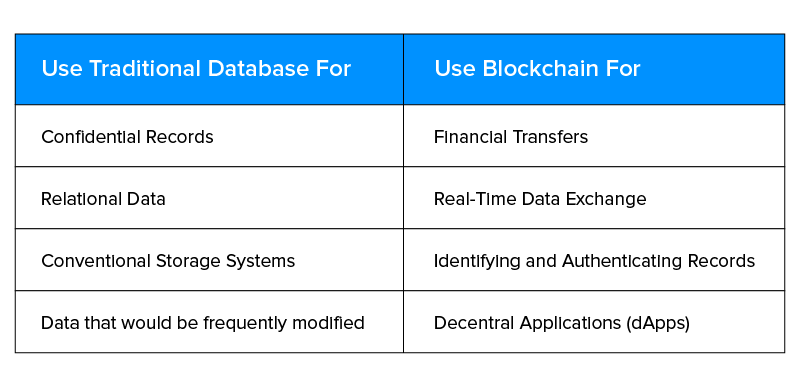
Closing Thoughts – Which One Should You Choose?
The choice of picking your next data storage technology is not a tough one. We discussed the crucial difference and benefits of using them, and both traditional databases and blockchain are the clear winners.
While databases are a winner when it comes to speed and accuracy, Blockchain offers innovation, verification, and automation.
If you are still confused about whether to go with a traditional database or Blockchain, let our experts help you resolve even deeper dilemmas of this industry.
We built Nova, a Blockchain-powered learning management system that diagnoses potentially fraudulent circumstances in the field of education. Since then, our repute and clientele have been on the rise, especially in the Blockchain sphere of things. On track to be one of the most recognized Blockchain app development companies, Appinventiv’s 600+ personnel offer an all-encompassing consultation to its partners.
Try us, and there won’t be a need to turn to anyone else, we assure promise.

strategies your digital product..
